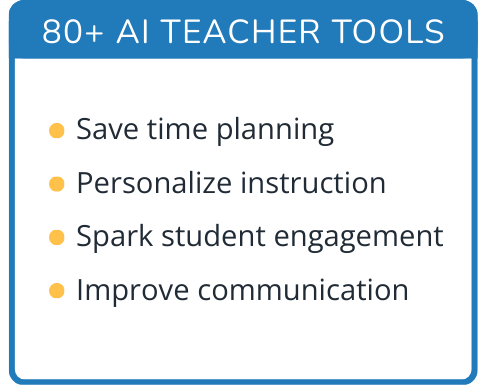Hi, what do you want to do?
Inside Mathematics
Conference Tables
Pupils analyze a pattern of conference tables to determine the number of tables needed and the number of people that can be seated for a given size. Individuals develop general formulas for the two growing number patterns and...
Noyce Foundation
Which is Bigger?
To take the longest path, go around—or was that go over? Class members measure scale drawings of a cylindrical vase to find the height and diameter. They calculate the actual height and circumference and determine which is larger.
EngageNY
Informal Proofs of Properties of Dilations
Challenge the class to prove that the dilation properties always hold. The instructional activity develops an informal proof of the properties of dilations through a discussion. Two of the proofs are verified with each class member...
EngageNY
Exponential Notation
Exponentially increase your pupils' understanding of exponents with an activity that asks them to explore the meaning of exponential notation. Scholars learn how to use exponential notation and understand its necessity. They use negative...
EngageNY
Numbers in Exponential Form Raised to a Power
Develop an understanding of the properties of exponents through this series of activities. This third lesson of 15 explores the patterns associated with the power property. Scholars expand the powers before applying the property.
Inside Mathematics
Quadratic (2009)
Functions require an input in order to get an output, which explains why the answer always has at least two parts. After only three multi-part questions, the teacher can analyze pupils' strengths and weaknesses when it comes to...
Inside Mathematics
Sorting Functions
Graph A goes with equation C, but table B. The short assessment task requires class members to match graphs with their corresponding tables, equations, and verbalized rules. Pupils then provide explanations on the process they used to...
EngageNY
Writing and Expanding Multiplication Expressions
Find out what's so standard about standard form. Scholars learn to write multiplication expressions with variables in the 10th lesson plan in a series of 36. They use different symbols for multiplication and translate between standard...
Curated OER
Quickies
For this math problem solving worksheet, learners answer 5 problems in 10 minutes. The problems include a variety of questions that could be solved by students who have had geometry and algebra.
EngageNY
Informal Proof of AA Criterion for Similarity
What does it take to show two triangles are similar? The 11th segment in a series of 16 introduces the AA Criterion for Similarity. A discussion provides an informal proof of the theorem. Exercises and problems require scholars to apply...
EngageNY
More About Similar Triangles
Determine whether two triangles are similar. The lesson presents opportunities for pupils to find the criterion needed to show that two triangles are similar. Scholars use the definition of similarity to find any missing side...
EngageNY
Exponents
Powered up! Here's a great resource on exponents. Scholars build on their previous understanding of exponents to include all positive real number bases. Distinguishing between an and a^n is a major goal in the fifth lesson of a 36-part...
Curated OER
Order of Operation
Students solve problems using the order of operation. In this algebra instructional activity, students factor, subtract, add and divide using the correct order to remove parentheses. They simplify expressions by combining like terms.
Virginia Department of Education
Rational Equations
Provide guidance and practice of the useful skill: solving rational equations using both an algebraic and graphical approach. Pupils solve increasingly more difficult rational equations using algebraic methods. After, they...
Curated OER
Using Factoring to Solve Equations
Eleventh graders use factoring to solve 44 different problems involving area, intercepts, quadratic equations, and functions.
Curated OER
Adding and Subtracting Fractions and Mixed Numbers
Students add and subtract fractions and mixed numbers. In this fractions worksheet, students learn how to add and subtract mixed numbers based on their knowledge of adding and subtracting fraction with a teacher led question and answer...
Curated OER
Family Activity - Color by Numbers: Fractions, Decimals, and Percents
Learners solve four short answer problems. They determine the number of each color of candy or paper clip in a bag, and calculate the fractional, decimal, and percentage representation of the color compared to the total number of items.
Curated OER
Multiplying and Dividing Fractions and Mixed Numbers
Upper graders study fraction and mixed number division and also review fraction multiplication. In this fraction and mixed numbers lesson, learners work with the teacher in an oral problem solving method to multiply and divide fractions...
Curated OER
Problem-Solving Strategy: Use Logical Reasoning
In this logical reasoning worksheet, students utilize the problem-solving strategy of logical reasoning to answer 2 short answer mathematical questions.
Curated OER
Multiples Worksheet (1 of 2)
This is a progressive introductory assignment on determining the least common multiple of pairs of numbers. First, eight numbers are listed for learners to simply practice writing multiples for. They write down the first six multiples...
Curated OER
Adding Fractions and Mixed Numbers
For this mathematics worksheet, 5th graders use the diagram to identify how many parts are shaded and what fraction of a pizza is this. Then they use the common denominator to add the numerators and simplify the fraction.
Curated OER
Factoring Trinomials
Students factor trinomials and quadratics. In this algebra lesson, students solve quadratics when the leading coefficient is one. They use a special factoring pattern to solve the trinomial.
Curated OER
Searching The Word
Fifth graders review EOG math terms and definitions found in their math notebooks, and pick between 15 and 20 words to put in a word search.
Curated OER
Number Theory and Fractions Vocabulary Crossword
In this math crossword, students use a set of clues and 15 words about number theory and fractions to complete a crossword puzzle. A reference web site is given for additional activities.




























